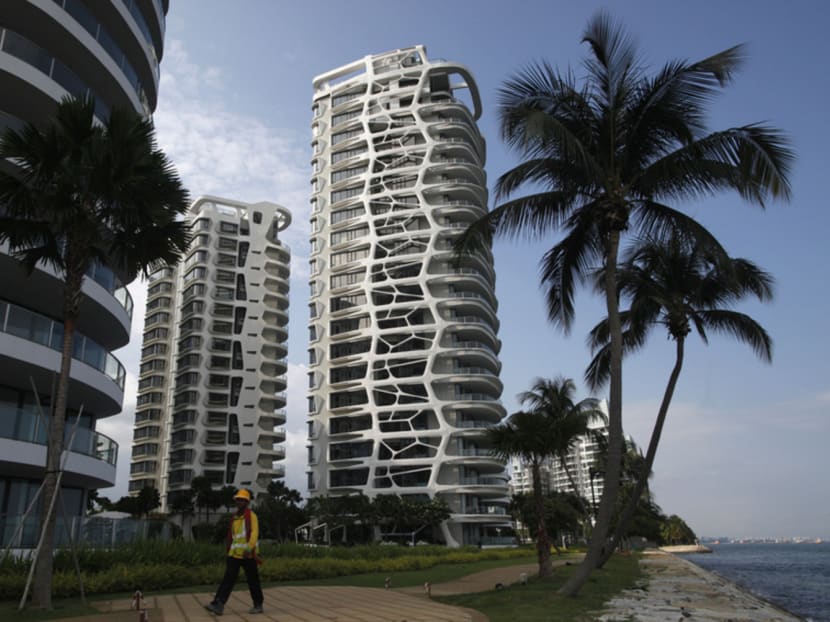Mortgage planning: Investment vs own-use property
It is only a little more than a year to the Monetary Authority of Singapore’s (MAS) deadline for the refinancing of investment property that many are still not aware of. While there is no end-date for the exemption of the 60 per cent Total Debt Servicing Ratio (TDSR) threshold for the refinancing of own-use property as long as it is bought before June 29, 2013, this exemption expires on June 30, 2017, for investment property.

Investment property differs from own-use property in that there is a steady stream of cash flow from rentals. Photo: Reuters
It is only a little more than a year to the Monetary Authority of Singapore’s (MAS) deadline for the refinancing of investment property that many are still not aware of. While there is no end-date for the exemption of the 60 per cent Total Debt Servicing Ratio (TDSR) threshold for the refinancing of own-use property as long as it is bought before June 29, 2013, this exemption expires on June 30, 2017, for investment property.
What this means is that after June next year, investors who are still unable to bring their TDSR down to within 60 per cent of their monthly income will not be allowed to refinance their loan at better rates, even if they are willing to pay down a small portion of their outstanding loan. Currently, most banks do allow for refinancing by making use of the MAS exemption and requiring investors to pay down 3 per cent of the outstanding loan before taking over.
There are implications for those with more than one property, especially when there are economic headwinds ahead with more job losses projected this year. And there are those who have fluctuating incomes or are looking to change jobs. The mortgagor should take stock of his situation, especially in the case of investment properties. For example, on his investment properties, he may be better off on a Deposit Mortgage Rate (DMR) home loan rather than a fixed-rate mortgage, which always results in a much higher floating spread when the fixed term ends, and this will now be after June 2017. DMR loans are offered by two banks in Singapore currently — DBS and OCBC, where the loan is pegged to the bank’s defined deposit rate instead of the traditional Singapore Interbank Offered Rate (SIBOR) or board rates. DBS offers an 18-month fixed deposit home rate, while OCBC offers a 36-month fixed deposit mortgage rate.
There are other things to consider in terms of mortgage planning for an investment property. One key factor is the need to retain the flexibility to sell the property when a good offer presents itself. Hence, going on a fixed-rate mortgage may not be a good idea for such properties.
A fixed-rate home loan always comes with a commitment or lock-in period during which the borrower will be slapped with a hefty 1.5 per cent penalty, or S$10,500 on a typical S$700,000 loan, if he sells the property and redeems his loan in full. Some might argue that this can be factored into the sale price by negotiating for slightly more. Still, this is akin to paying another stamp duty on exit, which eats into the investor’s profit.
Investment property differs from own-use property in that there is a steady stream of cash flows from rentals to help defray the borrowing costs. In this regard, the investor’s priority is to make sure he manages the carrying costs of the property well.
There will be less concern with a floating-rate interest rate home loan as long as he is able to cover the interest portion of the monthly repayment using his rentals. Indeed, he might want to do his own stress test to determine the point beyond which any further interest rises might render his position untenable.
Contrast that with an owner-occupied property, where the homeowner pays off his monthly mortgage using his hard-earned income. Surely the priority here would be to reduce the interest costs and pay off the loan in the shortest time possible?
There is more reason to go on a fixed-rate home loan for owner-occupied homes and to make partial repayment before refinancing every time the fixed term ends. As the TDSR exemption from MAS has no expiry date for owner-occupied homes bought before June 29, 2013, there is neither an issue with a lock-in period for a fixed rate loan nor refinancing later on should income vary.
ABOUT THE AUTHOR: Darren Goh is executive director of MortgageWise.sg, a boutique mortgage consultancy and distributor of mortgage products from lenders in Singapore





